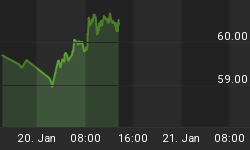The concept of one average confirming the other average came to be when Charles H. Dow first developed the Dow Jones Industrial Average and the Dow Jones Railroad Average. The concept was simple. When both averages are moving in the same direction and continuously clearing their previous Secondary high or low points, the averages are said to be "in gear" with each other and we have trend uniformity. When one average fails to confirm the other average it is a sign of trouble or at least possible trouble. If this non-confirmation remains, then the market is set up for a reversal of trend. If the averages do finally clear their previous secondary reaction points, then they are back in gear and the prevailing trend is reconfirmed.
According to Dow theory there are three movements of the averages, all of which may be in progress at one and the same time. The first, and most important, is the Primary trend. The second, and most deceptive movement, is the Secondary reaction. The third and usually unimportant movement is the daily fluctuation.
As all readers of this wrap up should know, the Primary trend remains bearish and has since it was confirmed in late 1999. Yes, that's right, 1999, just before the top in 2000. The Secondary trend was reconfirmed as being positive in January 2006 and remains so today. This Secondary reconfirmation is indicated by the price movement above the blue line on the chart below. On a very short-term basis, we now have a non-confirmation that has appeared. This non-confirmation is indicated in red on the chart below. All major non-confirmations begin in a small way. At this point there is simply no way to know if this minor non-confirmation is going to evolve into something more meaningful or not. Nonetheless, since this non-confirmation has developed over the last couple of weeks, I felt that it was necessary to acknowledge its existence.

Now, I want to show you another non-confirmation that is still unfolding. This non-confirmation is by no means minor and is in fact occurring at both the Primary and the Secondary level. Below I have plotted a chart of the Industrials verses the Dow Jones Top Ten Index. The Top Ten Index is comprised of the top 10 dividend yielding stocks within the Dow 30. In other words, this is a subset of the 30 industrials.
As you can see on the chart below, both of these indexes made a joint recovery high back in December 2004. Since that time, the Top Ten have faded and have in fact now formed a Secondary non-confirmation with the Industrials. In a round about way, this is telling us the same thing as the Advance/Decline data that I have been showing you. That being that this market is advancing on fewer and fewer issues.

For anyone who may doubt the importance of such non-confirmations, I want to point out in the chart below that the last time these two indexes failed to confirm each other was at the 2000 top and surely we can all remember what followed where this chart leaves off.

Last week I wrote on manipulation and I want to follow up on that briefly today. I stated that I do in fact believe in manipulation in regard to liquidity infusion as this is very obvious to all. I also went on to say that I had no way of proving the efforts of the alleged Plunge Protection Team stepping into the market buying selective stocks. Now, let me add another comment that I get from time to time and that being, we can no longer trust the Industrials because of the fact that it is made up of a mere 30 stocks and is easily manipulated. Okay, if we make that assumption, then it should be obvious that 10 stocks would even be easier to manipulate, right? Then, I have to ask, "why doesn't the PPT buy up these measly 10 stocks to eliminate the weakness within the Industrials and to mend this non-confirmation?" This should be a piece of cake, right? Surely in a year's time enough money could have been thrown at a mere 10 stocks to have corrected this little problem. If so, then why has the current non-confirmation been going on for over a year? As long as this non-confirmation exists, it is a serious warning. This is further evidence that the market is getting leaner and leaner just as the internal strength data suggests.
The April issue of Cycle News & Views is now available. With a subscription to Cycles News & Views you will also receive access to the 2006 forecast, which remains right on track. You will also receive short-term updates three nights a week and access to my Cycle Turn Indicator, which is used to identify crucial turn points. I also cover the dollar, gold and bonds.















